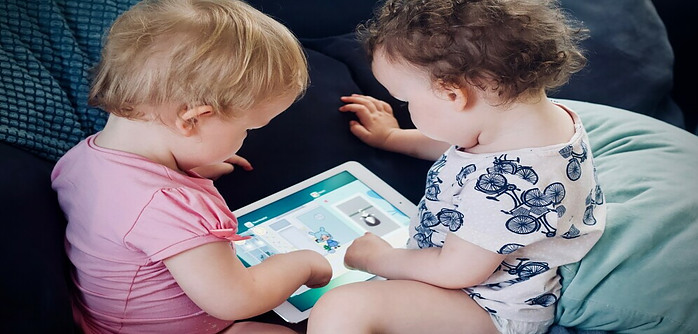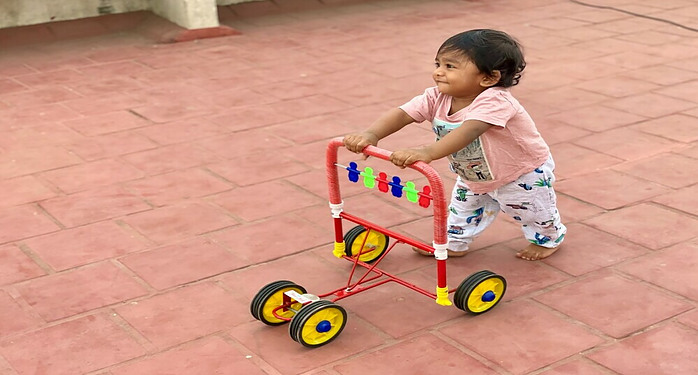
When nurturing a young child, I recognize the profound role the environment plays in their development. From the moment they’re born, babies absorb information rapidly from the world around them. This period of intense growth demands a setting that not only caters to their safety but actively fosters their cognitive and emotional progress.
To truly appreciate the impact an environment can have, it’s critical to understand the progression of infant development. Each phase, from a newborn’s reflexive responses to a toddler’s adventurous intrigue, requires tailor-made stimuli. What remains constant, however, is the need for an environment that challenges and engages the baby in wholesome ways.
A space that is too sterile or devoid of sensory input can leave a baby bemused and passive, potentially impacting their neurological development. Contrarily, an environment brimming with the right stimulation can spur synaptic connections, fuel learning, and evoke meaningful interactions.
With that said, it’s essential to strike a balance. An overstimulated baby can become distressed and inconsolable. As I set the stage for an optimal learning arena, safety and suitability remain my top priorities. Each toy, texture, and sound should conspire to create a sanctuary where learning is natural and delightful.
So, if you’re keen on architecting a sensory-rich environment that forms the best backdrop for your baby’s growth, the following section will be your guide. From colors that catch the eye to melodies that enchant the ear, get ready to craft a nurturing space that’s both a safe haven and a hive of activity.
Designing a Sensory-Rich Nurture Zone
When it comes to fostering development in infants, sensory stimulation is key. Sight, sound, touch, and even smell play critical roles in how babies discover the world.
Start with visual stimulation. Use contrasting colors and patterns to catch their eye. Mobiles with bright, geometric shapes or a variety of pictures in their room provide not just decoration, but a canvas for developing visual tracking and focus.
Don’t neglect texture. Infants learn a lot through touch. Offer a range of materials they can safely explore with their hands and mouths. A soft blanket, a crinkly book, and plush toys of different sizes encourage tactile learning.
Sound is next. Soothing lullabies and lively children’s songs can be both calming and stimulating. Gentle music nurtures a sense of rhythm and can prompt early language development.
Lastly, keep safety at the forefront. Every addition should be non-toxic, secure, and size-appropriate to prevent choking hazards. Regularly inspect toys and materials to ensure they remain safe as baby grows.
With a nurture zone equipped to stimulate their senses, babies are all set to engage with the world. This lays the foundation for the next step: interactive play, which we’ll cover in the following section.

The Importance of Interactive Play
Toys are more than just playthings; they are the tools that help your baby explore and make sense of their world. Choosing the right age-appropriate toys is vital. For infants, this means toys that can be grabbed, squeezed, or make a noise. As your baby grows, puzzles and building blocks can help develop their problem-solving skills.
Structured playtime isn’t about a strict schedule; it’s about offering opportunities for your baby to learn new skills in a supportive environment. This might be as simple as sitting with your baby and showing them how to stack rings on a pole or pointing out the colors on a toy.
Curiosity is the engine that drives learning in young children. By providing toys that respond to your baby’s actions, like a button that, when pressed, plays music, you’re teaching them cause and effect. Open-ended play, such as with blocks or art materials, gives them the freedom to create and explore possibilities.
As toys and interactions feed your baby’s brain with stimuli, growth in physical dexterity and cognitive abilities tends to follow. Make sure to rotate toys regularly to keep the environment fresh and challenging. Keeping a few favorite toys in the mix reassures your baby and provides a sense of mastery over their surroundings.
Creating a Routine That Promotes Growth
Stability shapes confidence. When babies follow a consistent routine, they’re more likely to engage with their environment because they know what to expect. This article has offered insights into nurturing your baby’s developmental journey through a stimulating setup and interactive play. Now, I want to focus on the lynchpin that holds it all together: a well-balanced routine.
Imagine a typical day. It begins with a welcoming morning cuddle, transitions into active play sessions, includes quiet time for rest, and incorporates responsive feeding times. In crafting such a schedule, you create a structure in which your baby can anticipate and thrive in different activities—each crafted for growth.
Routines shouldn’t feel rigid. They’re the framework within which spontaneity and flexibility can flow. Let’s say your baby shows a keen interest in a particular toy or book. Carve out time to explore that interest further and see where their curiosity leads.
Caretaker involvement is also key. When you or other caregivers are present and engaged in the routine, babies notice. They feel secure and are more apt to learn. Bringing caregivers into the routine also means your baby forms healthy attachments and gets a range of social interactions.
Remember, the routine is for your baby’s growth and your peace of mind. It provides the certainty that every day is a balanced mix of learning and love. As you move forward, remember to flex the routine so it grows with your child, addresses their evolving interests, and meets their developmental milestones with joy and affection.




